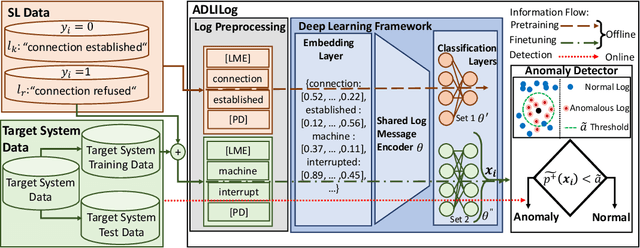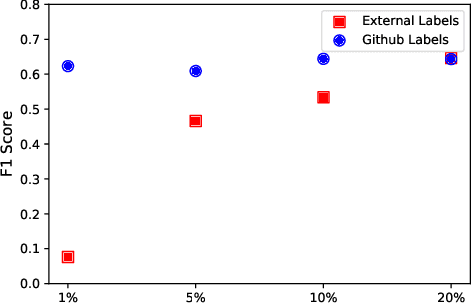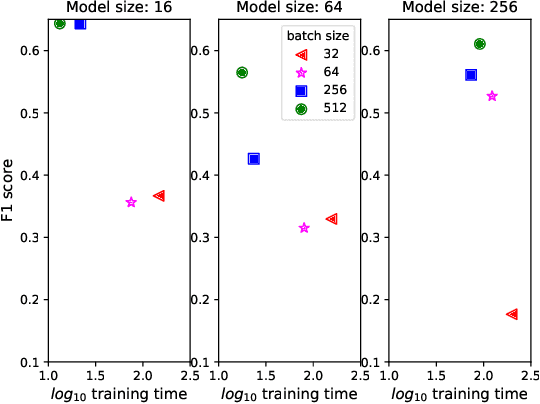Gjorgji Madjarov
Faculty of Computer Science and Engineering, Ss. Cyril and Methodius University, Skopje, Macedonia
Leveraging Log Instructions in Log-based Anomaly Detection
Jul 07, 2022



Abstract:Artificial Intelligence for IT Operations (AIOps) describes the process of maintaining and operating large IT systems using diverse AI-enabled methods and tools for, e.g., anomaly detection and root cause analysis, to support the remediation, optimization, and automatic initiation of self-stabilizing IT activities. The core step of any AIOps workflow is anomaly detection, typically performed on high-volume heterogeneous data such as log messages (logs), metrics (e.g., CPU utilization), and distributed traces. In this paper, we propose a method for reliable and practical anomaly detection from system logs. It overcomes the common disadvantage of related works, i.e., the need for a large amount of manually labeled training data, by building an anomaly detection model with log instructions from the source code of 1000+ GitHub projects. The instructions from diverse systems contain rich and heterogenous information about many different normal and abnormal IT events and serve as a foundation for anomaly detection. The proposed method, named ADLILog, combines the log instructions and the data from the system of interest (target system) to learn a deep neural network model through a two-phase learning procedure. The experimental results show that ADLILog outperforms the related approaches by up to 60% on the F1 score while satisfying core non-functional requirements for industrial deployments such as unsupervised design, efficient model updates, and small model sizes.
Stories for Images-in-Sequence by using Visual and Narrative Components
Sep 22, 2018


Abstract:Recent research in AI is focusing towards generating narrative stories about visual scenes. It has the potential to achieve more human-like understanding than just basic description generation of images- in-sequence. In this work, we propose a solution for generating stories for images-in-sequence that is based on the Sequence to Sequence model. As a novelty, our encoder model is composed of two separate encoders, one that models the behaviour of the image sequence and other that models the sentence-story generated for the previous image in the sequence of images. By using the image sequence encoder we capture the temporal dependencies between the image sequence and the sentence-story and by using the previous sentence-story encoder we achieve a better story flow. Our solution generates long human-like stories that not only describe the visual context of the image sequence but also contains narrative and evaluative language. The obtained results were confirmed by manual human evaluation.
* 12 pages, 4 figures, ICT Innovations 2018
Addressing Item-Cold Start Problem in Recommendation Systems using Model Based Approach and Deep Learning
Jun 18, 2017


Abstract:Traditional recommendation systems rely on past usage data in order to generate new recommendations. Those approaches fail to generate sensible recommendations for new users and items into the system due to missing information about their past interactions. In this paper, we propose a solution for successfully addressing item-cold start problem which uses model-based approach and recent advances in deep learning. In particular, we use latent factor model for recommendation, and predict the latent factors from item's descriptions using convolutional neural network when they cannot be obtained from usage data. Latent factors obtained by applying matrix factorization to the available usage data are used as ground truth to train the convolutional neural network. To create latent factor representations for the new items, the convolutional neural network uses their textual description. The results from the experiments reveal that the proposed approach significantly outperforms several baseline estimators.
 Add to Chrome
Add to Chrome Add to Firefox
Add to Firefox Add to Edge
Add to Edge